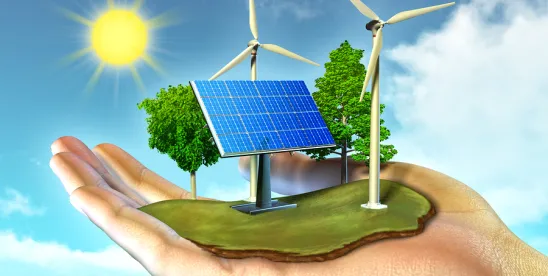During the spring’s customarily dreary weather, many states have been seeking out sunshine and wind. In the months of March and April alone, eight states in the US passed legislation in an attempt to either make the permitting process easier for solar and wind power or to commit to the use of renewable power by a certain date.
The significant renewable energy legislation passed this spring are highlighted below:
-
On March 19, South Dakota’s Republican Governor Kristi Noem signed Senate Bill 15 into law, which clarifies the Public Utilities Commission’s authority to make sure permit applications for solar and wind energy facilities are handled expeditiously and with public safety in mind. The law is intended to reduce unnecessary regulatory burdens for wind and solar projects in South Dakota;
-
On March 22, 2019, New Mexico’s Democratic Governor Michelle Lujan Grisham signed into law the Energy Transition Act, which commits the state to 100% renewable energy by 2050. The law has a “phase-in period” which requires 50% by 2030, 80% by 2040, 100% by 2045 for utility companies and 100% for co-ops by 2050.
-
On April 2, 2019, Maine’s Democratic Governor Janet Mills signed a bill into law that would restore net metering, giving solar customers a credit for the excess energy they produce when the sun is shining to offset the cost of the power they pull off the grid when it is not. The bill also eliminates a Public Utilities Commission requirement that solar customers have two electric meters which would have charged them for all the electricity they used, even if they generated it themselves;
-
On April 7, 2019, Maryland’s legislature passed a bill at the eleventh-hour which would require a minimum of 50% renewable energy by 2030;
-
On April 11, 2019, Washington State approved a 100% clean energy bill making it the fourth state in the US to pass such a law. Senate Bill 5116 will require the state to power 100% of its electricity from “carbon-free” resources by 2045 and all electricity sales must be carbon-neutral by 2030;
-
Also on April 11, 2019, Puerto Rico’s New Progressive Party Governor Ricardo Rosselló signed into Senate Bill 1121, a renewable energy mandate. The law requires the island’s Puerto Rico Electric Power Authority to source 40% of its power from renewables by 2025 and cease burning coal by 2028. The law also sets a goal of 100% for renewable energy use by 2050;
-
On April 16, 2019, Nevada’s Senate unanimously passed Senate Bill 358, which would set its renewable portfolio standard (RPS) to require a minimum of 50% renewable energy by 2030; and
-
On April 19, 2019, Illinois’s Democratic Governor JB Pritzker signed House Bill 2988 into law which would clarify zoning standards for wind energy development across the state. The law now allows only counties and municipalities to establish standards for wind farm development and townships will no longer have zoning authority over wind farm development.
What has brought on such a flurry of renewable energy legislation? Most of these pieces of legislation had been in the works for some time, but what likely pushed many states to pass these mandates stems from the Trump Administration again announcing its proposed severe budget cuts to the US Energy Department division charged with renewable energy and energy efficiency research (which were not passed by Congress).
It is yet to be seen how the bills will impact each of these states’ economies. Critics of state renewable portfolio standards argue that the mandates may be economically hollow for a state because some allow the renewable energy used to meet a mandate to be generated by facilities located outside of the state.
Moreover, not all states have passed legislation making it easier for solar and wind project development this month. For example, Oregon recently adopted a temporary rule limiting solar sitting on certain high-value farmland. This may deter solar development companies from coming into the state, because many solar projects are sited on leased or purchased farmland. However, this rule is temporary and may not necessarily be incongruent with Oregon’s ambitious RPS passed in 2016, which requires 50% renewable energy by 2040.
Ultimately, the forecast in the coming months appears to have a lot of sunshine and steady wind in it, and it is likely that more states will begin proposing and adopting legislation friendly to wind and solar in the coming year. In fact, the Institute for Energy Economics and Financial Analysis just released a report showing that based on EIA’s short-term energy outlook, renewable energy production is set to outpace coal in the month of April. We will continue to track and monitor regulations applicable to the renewable energy sphere.




 />i
/>i
